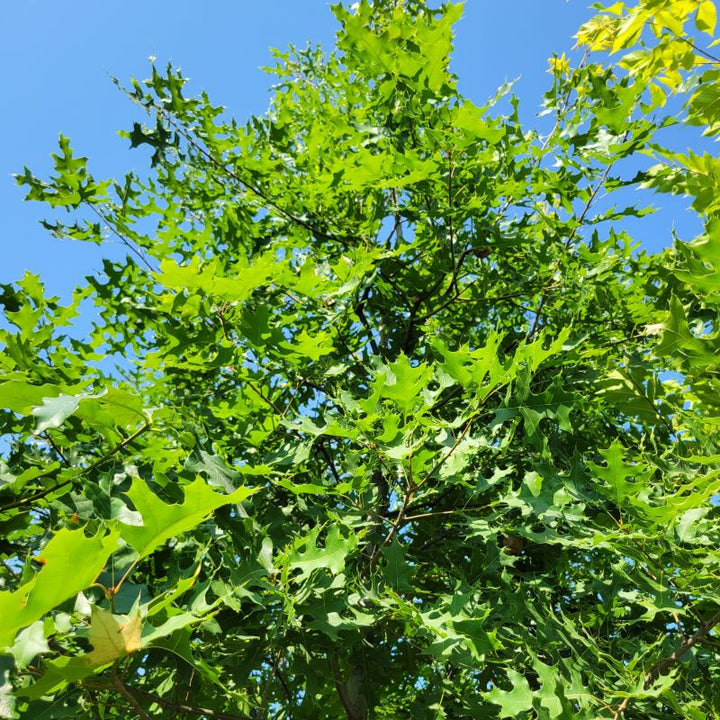Quercus coccinea (Scarlet Oak)
- Low stock - 2 items left
- Inventory on the way
Quercus coccinea, commonly called scarlet oak and occasionally called black oak, is a large, rounded oak tree that is a shwoy member of the red oak group, a common grouping of oaks based on the color of their fall foliage. Quercus coccinea grows to 50-80' tall at maturity. Scarlet oak is known for its glossy green wide-lobed leaves which turn to a bright, eye-catching scarlet-red hue in the fall. As an oak, Quercus coccinea also produces acorns, but first fruit doesn't typically appear for about 20 years, though as a fast growing species, scarlet oak will already be at an impressive size by this point. Acorns are relatively average in appearance, but may be smaller than some species with a shiny, rounded or bowl-shaped cap. Quercus coccinea is typically planted for ornamental uses, but is a relatively hardy species once established, capable of withstanding drought, dry soil, and intense heat. Scarlet oak is typically found in drier upland forest environments, meaning that they tend to prefer sandy, medium-dry soils and occasionally acidic conditions.
In addition to ornamental use, while fall foliage makes it a great pick as a specimen tree, scarlet oak has a great deal of ecological appeal too; structure of the tree is attractive as shelter for a variety of insects, birds, and small mammals. In addition, scarlet oak acorns are ecologically valuable to a number of species including white-tailed deer, bear, wild turkey, blue jays, and various species of squirrel and waterfowl. In addition to acorn value, many oak species are regarded as important keystone plants for their support of larval butterflies and moths, and Quercus coccinea is no different; scarlet oak is a host to the caterpillars of several species of hairstreak butterfly and duskywing moth, as well as the attractive imperial moth (Eacles imperialis).






